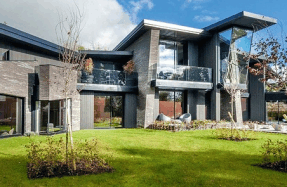

There are many technical areas that need a bit of head scratching and working out when building a home — especially if you’re building an energy-efficient one. While you’ll have experts on hand to do this job for you, it’s always good to try and gain an understanding of these areas. It’ll give you the confidence to discuss them with your build team from the off. Airtightness is one such area.
WHAT IS AIRTIGHTNESS?
Airtightness focuses on the level of air leakage. Air leakage is the uncontrolled movement of air into and out of a building that is not for the planned purpose of exhausting stale air or bringing in fresh air, like a mechanical ventilation system would. Airtightness is aimed at stopping this uncontrolled movement of air by closing the gaps and cracks in the construction of the building (the fabric, the windows and doors, and around cables and pipes, for example) through which warm air can escape and cold air can get in. To understand more about what needs to be considered, here are eight airtightness questions answered…
1 HOW IS IT MEASURED?
Air leakage is measured as the rate of leakage per m² of external envelope per hour at




